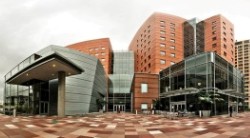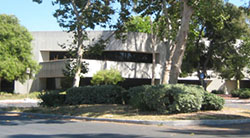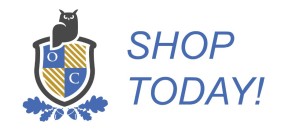
Educators of gifted children face many challenges today not the least of which is keeping them interested, engaged, and motivated in a traditional classroom environment. There is such a wide range of giftedness, learning styles, maturity, and social development (not to mention a diverse curriculum) that makes it difficult for a teacher to provide opportunities for each student to grow to his or her potential.
But one way teachers are addressing the complexities of it all is to introduce Problem Based Learning, also called Project Based Learning (PBL), a strategy that enables students to engage in solving authentic, real-world problems of interest and relevance to them.
Problem Based Learning Provides Purpose
PBL involves interdisciplinary objectives and approaches to be used in a single scenario. It energizes both teacher and students and provides many opportunities for engagement, both conceptual and practical thinking, individual and group participation, community involvement, and positive interaction with parents and mentors.
While there are many ways to implement PBL, there are some common characteristics that make the technique ideal for motivating gifted students. It associates well with an interdisciplinary curriculum. It provides a constructionist environment that requires students to build a body of knowledge in order to solve the problems they are presented with.
In real-world problems, there is often not enough information to go on. The problems are incomplete. Students must become self-reliant and self-directed in finding answers. And students must sometimes redefine the problem as they research and process it.
In approaching solutions to complex problems, gifted students share some of the qualities that real-world experts have in dealing with society’s issues. There is a need for independence as well as cooperation with other experts who need to be consulted. There are conceptual thinking and research needed to delve deeply into a subject to come up with one or more practical solutions.
PBL can be implemented slowly in a classroom using small problem-based scenarios that require independent thinking and collaboration with other students in a group. The content should be authentic and should be what drives the activity. The activity should provoke thought and discussion and lead to a more in-depth study. It is the quality of the research that provides the most value in these exercises.
Problems should be based, when possible, on the interests of students. This will encourage student ownership of the project and promote creativity. It will set the stage for more involvement and lead to enthusiastic participation.
This type of learning has shown that it better prepares students for problem-solving in standardized tests, but beyond that, prepares them for the complex tasks and problems they will face as adults. It has the additional advantage of boosting the teacher’s professional satisfaction.
Meaningful Work is Important in Driving Engagement
Researchers say that planning classroom work to provide a greater sense of purpose and meaning can help students become more engaged in learning new concepts and motivate them to persist through challenges. They say that it is important to establish a certain mindset of belief that what the student is learning can be connected to the real world.
Students should be given assignments that tap into their natural sense of wanting to accomplish long-term goals in life and to their future professional interests. Without real meaning to their work, a lot of students will not be motivated, especially gifted students.
Researchers from the Universities of Texas, Stanford, and Pennsylvania found that students persisted longer at boring tasks if they had a “self-transcendental purpose for learning.” For example, they would be more inclined to attend college if they planned to get a nursing degree to help treat low-income or disadvantaged children.
The Right Questions can Establish Purpose
Real-world problems are multidimensional. They often require the collaboration of many professionals in different disciplines. They involve asking many questions from each area of discipline to adequately define the problem before solutions can be sought.
Peter Drucker (Men, Ideas & Politics) said: “The most serious mistakes are not being made as a result of wrong answers.” He followed that with “The truly dangerous thing is asking the wrong questions.”
Problems are solved by asking good questions, by thinking in an integrated manner, and by using the combined intelligence and advice of a diverse project team.
This can be done in the classroom to teach the kind of learning needed to solve community and world problems as well as STEM and STEAM classroom problems.
STEM/STEAM is an educational model that integrates the content and process of the school curriculum. It is standards-based and represents open-ended problem-solving in the workplace. It is team-based and offers hands-on learning.
It also uses scientific inquiry (asking questions), invention, and design processes. It assumes the world is connected and problem-solving is multidimensional, empowering students to collaborate in teams and work together to solve a common problem.
Students should be encouraged to ask questions, try new approaches, take notes and create documents, learn from failure, and try again.
Real-world projects can include teams comprising engineers, economists, environmental experts, safety experts, consultants, politicians, lawyers, and more.
Classroom projects can involve bringing in community members representing these areas to discuss the kinds of questions they would ask on projects. For example, they could provide insights on questions about the technology required, installation and maintenance costs, safety concerns, legal issues, and town council concerns and codes to be followed.
The Classroom is the Place to Practice Purposeful Learning
Teachers can provide complex problems to solve, too. They can organize teams of 4-5 students to solve a problem related to their school. Each student can be assigned a different area of concern to study and discuss in coming up with a group solution to the problem.
That problem might be to establish a new library or gymnasium or greenhouse for the school. Or it may be to design a new street layout and traffic control system for the town. It can be anything requiring multiple perspectives.
Students should be allowed to have input on choosing the problem and forming the solution. They should be allowed – and encouraged to discuss their ideas and take ownership of the project. Communication with the teacher and team members is important.
Students need to be taught that it’s OK to work with ambiguous information and that they should learn to be comfortable with it. And it’s OK to make mistakes and to learn from them. Keep asking questions is the way to define the problem and to start forming the best solution. Bringing a personal perspective to the problem is what creates purpose.




